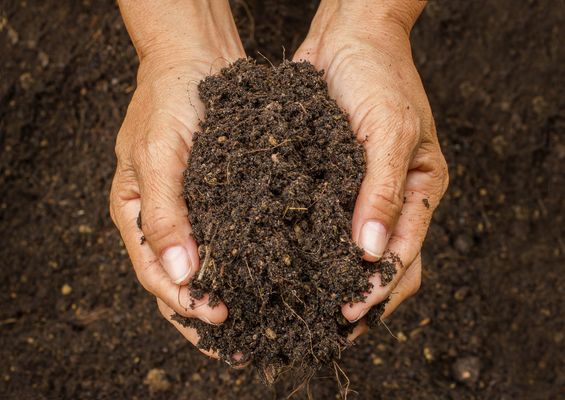18.3.3
Zoos, Seedbanks, & Other Conservation Methods
Methods Used by Zoos
Methods Used by Zoos
Zoos are key to ex situ conservation efforts. They play a role in scientific research, reintroductions, education, and conservation of genetic diversity.


Ex situ conservation
Ex situ conservation
- Conservation ex situ means that organisms that need conserving are moved out of their habitat and protected elsewhere.
- Zoos and seed banks both play a role in ex situ conservation.
- Ex situ conservation removes the organisms under threat from those threats, but sampled individuals from an environment will always have a lower genetic diversity than the original population.
- Zoos try and conserve genetic diversity of animals and increase awareness of the importance of conservation.


Education
Education
- Zoos play a vital role in education. Visitors to the zoo receive information about the importance of conserving vulnerable species.
- Many zoos have the opportunity for schools to visit, where children will be taught why conservation is important in an engaging and interactive way. -Some zoos will also run outreach programmes, where they visit schools to talk more about the work that they do.
- Zoos also conduct a lot of scientific research. This includes genetic research & animal behaviour research.


Reintroduction programmes
Reintroduction programmes
- Zoos try to reintroduce animals into the wild where it is possible.
- An example of a successful reintroduction programme is the reintroduction of the golden lion tamarin to Brazil. It was a collaborative effort with more than 40 zoos in several countries.
- Reintroduction programmes can be difficult if the animal has lived in the zoo its whole life and would be unable to survive in the world. This is true of most big cats who never learnt how to hunt properly.


Captive breeding programmes
Captive breeding programmes
- Zoos run captive breeding programmes to increase numbers of individuals in an endangered species.
- Genetic diversity is a key consideration for captive breeding programmes.
- By comparing genomes of the captive animals, zoos can work together to match up individuals which would produce genetically diverse offspring.


Success of captive breeding
Success of captive breeding
- Captive breeding programmes have varying levels of success.
- An example of a successful programme is the panda in China. Captive breeding has been used in combination with reintroduction programmes, resulting in the panda no longer being endangered.
- Some captive breeding programmes have lower levels of success because zoos cannot recreate the conditions that are needed.


Frozen zoos
Frozen zoos
- Some zoos freeze the sperm, eggs, or embryos of captive animals to form "frozen zoos".
- These can be useful as sperm can be taken from males after death. This means their sperm can still be used for artificial insemination.
- Freezing the genetic material allows it to be stored for longer and used in future assisted reproduction methods (e.g. IVF).
Conservation of Plants
Conservation of Plants
Seed banks play an important role in ex situ conservation. They can store seeds to conserve genetic diversity. Botanical gardens house many plant species and often have seed banks.


Storing seeds
Storing seeds
- Storing seeds is an important way to conserve genetic diversity of plants.
- Many seeds are happy to be dried and frozen, and will survive in dormancy like this for hundreds of years.
- For other plants, storage has proven more difficult because the seeds are not amenable to normal storage methods, or, if they are mosses and ferns, they do not have seeds.


Conserving genetic diversity
Conserving genetic diversity
- To ensure that a sufficient level of genetic diversity is captured, it is important to store seeds from different populations and areas.
- Seed banks have limited space. It is important that the most relevant seed types are collected to ensure the maximum genetic diversity is stored.
- Having a genetically diverse collection is important because some of the plants may have properties which would be beneficial.
- For example, there may be a strain of wheat which is particularly resistant to drought, or to flooding.


Role of seed banks
Role of seed banks
- Seed banks exist to conserve as many species as possible, capturing the most genetic diversity they can, but they also serve other purposes.
- Seed banks are used for research by botanic gardens, as well as for raising awareness of the importance of conserving plants.
- Kew Gardens runs the Millennium Seed Bank project, which has the largest, most diverse collection of seeds in the world.


Botanical gardens
Botanical gardens
- Botanical gardens are important for the conservation and study of plant species.
- Many botanical gardens also house seed banks.


Conserved areas & national parks
Conserved areas & national parks
- Conserved areas like national parks are also important for preserving biodiversity.
- National parks are large areas of land containing numerous plant and animal species.
- Such areas are protected from development. This helps protect the native species that live there.
- Conserved areas of water and marine ecosystems are called marine parks. They have a similar function to national parks.
1Cell Structure
1.1Cell Structure
1.1.1Studying Cells - Microscopes
1.1.2Introduction to Eukaryotic & Prokaryotic Cells
1.1.3Ultrastructure of Eukaryotic Cells
1.1.4Ultrastructure of Eukaryotic Cells 2
1.1.5Ultrastructure of Eukaryotic Cells 3
1.1.6Prokaryotic Cells
1.1.7Viruses
1.1.8End of Topic Test - Cell Structure
1.1.9Exam-Style Question - Microscopes
1.1.10A-A* (AO2/3) - Cell Structure
2Biological Molecules
2.1Testing for Biological Modules
2.2Carbohydrates & Lipids
2.3Proteins
3Enzymes
4Cell Membranes & Transport
4.1Biological Membranes
5The Mitotic Cell Cycle
6Nucleic Acids & Protein Synthesis
6.1Nucleic Acids
7Transport in Plants
8Transport in Mammals
8.1Circulatory System
8.2Transport of Oxygen & Carbon Dioxide
9Gas Exchange
9.1Gas Exchange System
10Infectious Diseases
10.1Infectious Diseases
10.2Antibiotics
11Immunity
12Energy & Respiration (A2 Only)
13Photosynthesis (A2 Only)
14Homeostasis (A2 Only)
14.1Homeostasis
14.2The Kidney
14.3Cell Signalling
14.4Blood Glucose Concentration
14.5Homeostasis in Plants
15Control & Coordination (A2 Only)
15.1Control & Coordination in Mammals
15.1.1Neurones
15.1.2Receptors
15.1.3Taste
15.1.4Reflexes
15.1.5Action Potentials
15.1.6Saltatory Conduction
15.1.7Synapses
15.1.8Cholinergic Synnapses
15.1.9Neuromuscular Junction
15.1.10Skeletal Muscle
15.1.11Sliding Filament Theory Contraction
15.1.12Sliding Filament Theory Contraction 2
15.1.13Menstruation
15.1.14Contraceptive Pill
15.2Control & Co-Ordination in Plants
16Inherited Change (A2 Only)
16.1Passage of Information to Offspring
16.2Genes & Phenotype
17Selection & Evolution (A2 Only)
17.2Natural & Artificial Selection
18Classification & Conservation (A2 Only)
18.1Biodiversity
18.2Classification
19Genetic Technology (A2 Only)
19.1Manipulating Genomes
19.2Genetic Technology Applied to Medicine
19.3Genetically Modified Organisms in Agriculture
Jump to other topics
1Cell Structure
1.1Cell Structure
1.1.1Studying Cells - Microscopes
1.1.2Introduction to Eukaryotic & Prokaryotic Cells
1.1.3Ultrastructure of Eukaryotic Cells
1.1.4Ultrastructure of Eukaryotic Cells 2
1.1.5Ultrastructure of Eukaryotic Cells 3
1.1.6Prokaryotic Cells
1.1.7Viruses
1.1.8End of Topic Test - Cell Structure
1.1.9Exam-Style Question - Microscopes
1.1.10A-A* (AO2/3) - Cell Structure
2Biological Molecules
2.1Testing for Biological Modules
2.2Carbohydrates & Lipids
2.3Proteins
3Enzymes
4Cell Membranes & Transport
4.1Biological Membranes
5The Mitotic Cell Cycle
6Nucleic Acids & Protein Synthesis
6.1Nucleic Acids
7Transport in Plants
8Transport in Mammals
8.1Circulatory System
8.2Transport of Oxygen & Carbon Dioxide
9Gas Exchange
9.1Gas Exchange System
10Infectious Diseases
10.1Infectious Diseases
10.2Antibiotics
11Immunity
12Energy & Respiration (A2 Only)
13Photosynthesis (A2 Only)
14Homeostasis (A2 Only)
14.1Homeostasis
14.2The Kidney
14.3Cell Signalling
14.4Blood Glucose Concentration
14.5Homeostasis in Plants
15Control & Coordination (A2 Only)
15.1Control & Coordination in Mammals
15.1.1Neurones
15.1.2Receptors
15.1.3Taste
15.1.4Reflexes
15.1.5Action Potentials
15.1.6Saltatory Conduction
15.1.7Synapses
15.1.8Cholinergic Synnapses
15.1.9Neuromuscular Junction
15.1.10Skeletal Muscle
15.1.11Sliding Filament Theory Contraction
15.1.12Sliding Filament Theory Contraction 2
15.1.13Menstruation
15.1.14Contraceptive Pill
15.2Control & Co-Ordination in Plants
16Inherited Change (A2 Only)
16.1Passage of Information to Offspring
16.2Genes & Phenotype
17Selection & Evolution (A2 Only)
17.2Natural & Artificial Selection
18Classification & Conservation (A2 Only)
18.1Biodiversity
18.2Classification
19Genetic Technology (A2 Only)
19.1Manipulating Genomes
19.2Genetic Technology Applied to Medicine
19.3Genetically Modified Organisms in Agriculture
Unlock your full potential with Seneca Premium
Unlimited access to 10,000+ open-ended exam questions
Mini-mock exams based on your study history
Unlock 800+ premium courses & e-books